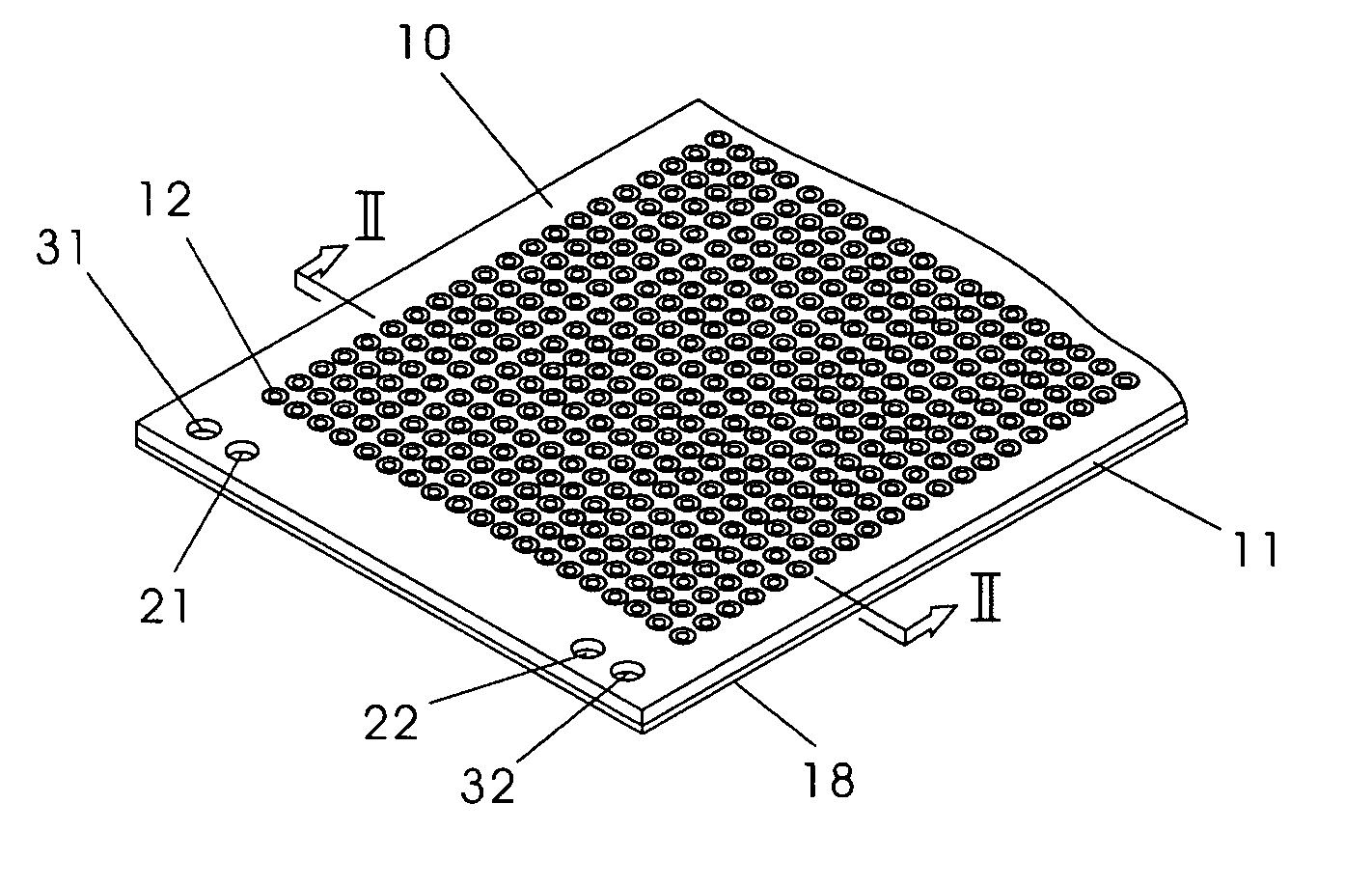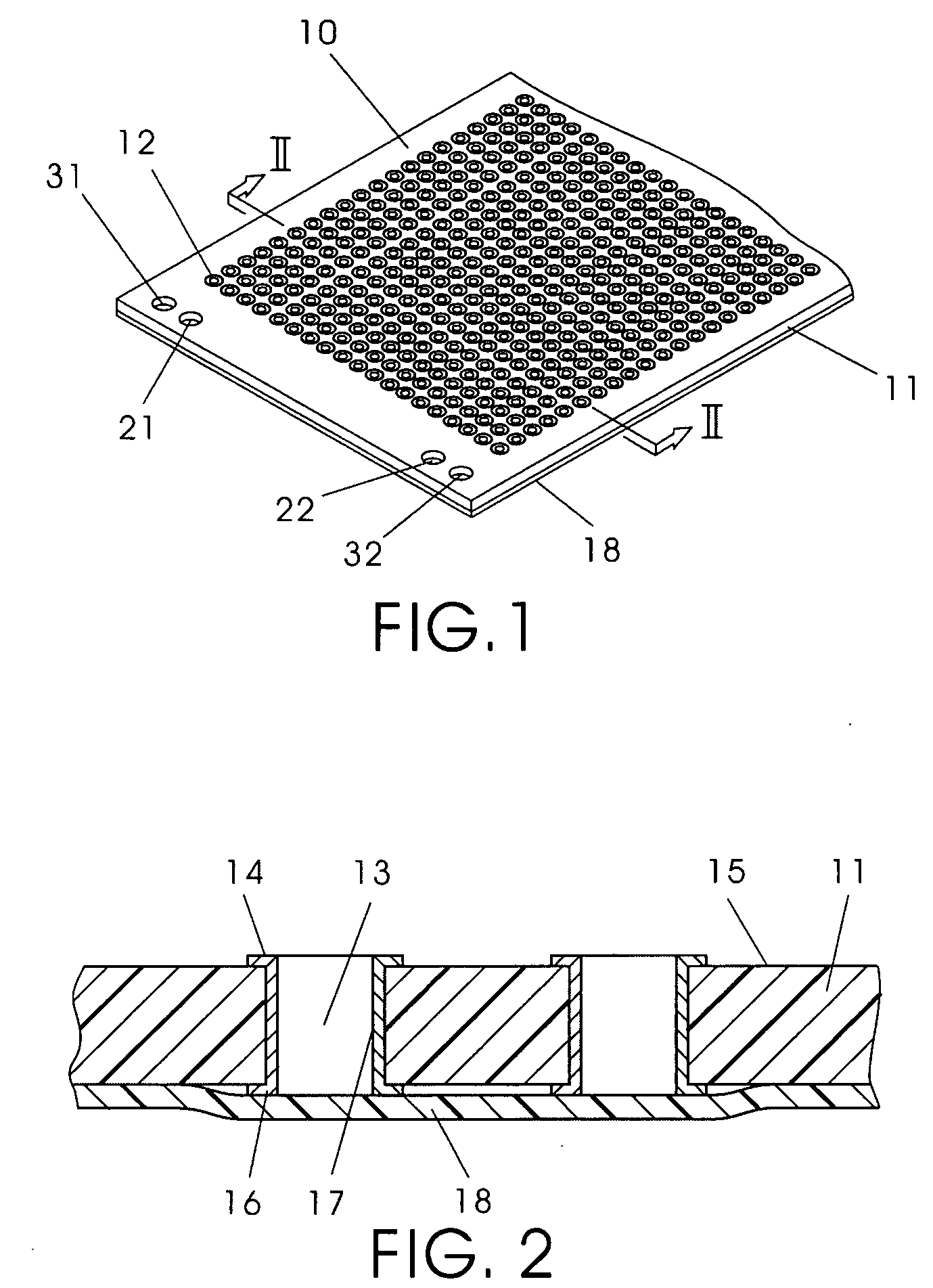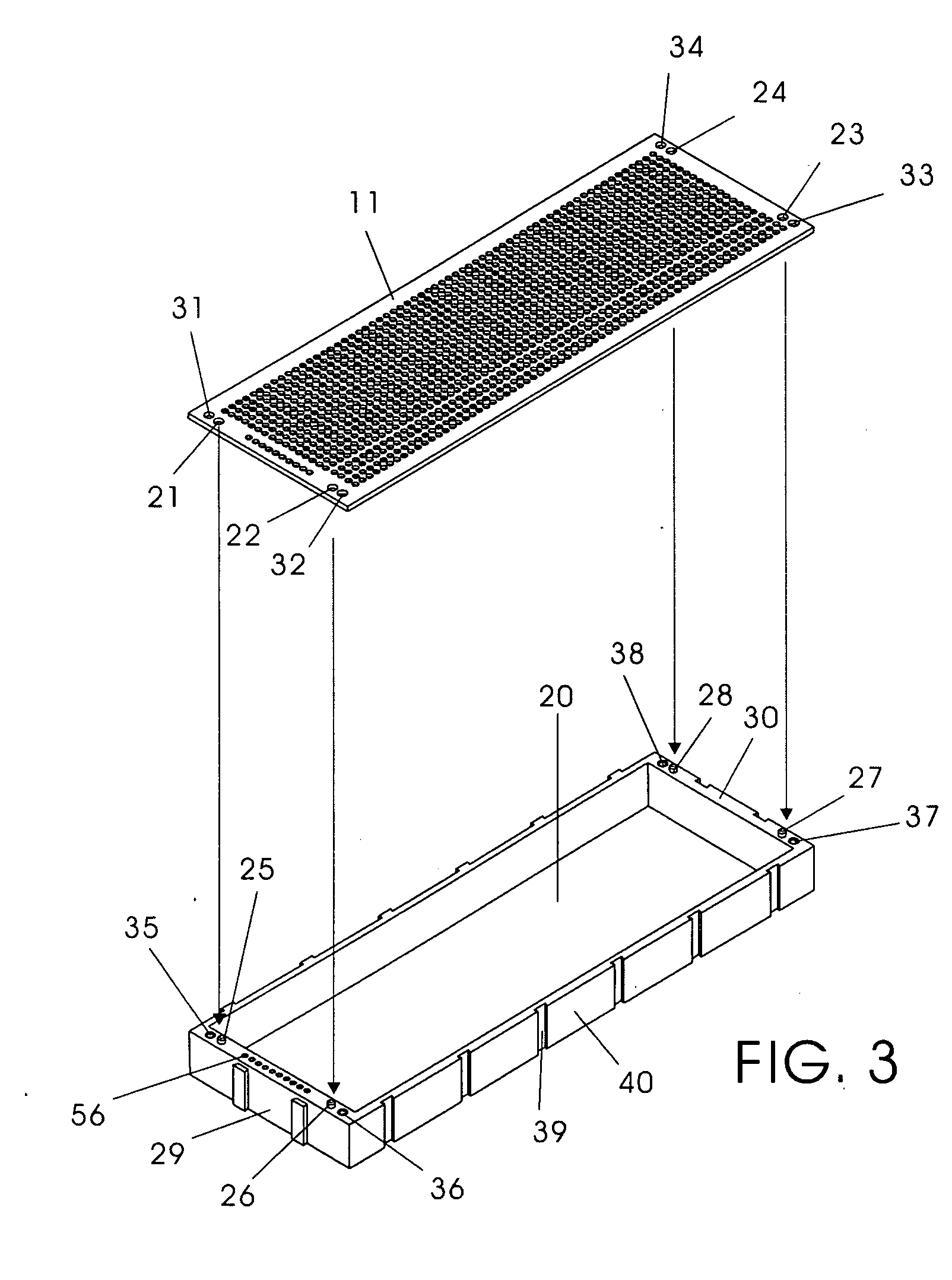Electronic circuit prototyping composite support
a technology of electronic circuit and composite support, which is applied in the direction of programmable/customizable/modifiable circuits, dielectric characteristics, printed element electric connection formation, etc., can solve the problems of no longer re-usable, no longer re-usable, and failure to meet the requirements of the application or removal of the circuit, so as to facilitate the testing of the circuit's operation and feasibility, and the effect of convenient application or removal
- Summary
- Abstract
- Description
- Claims
- Application Information
AI Technical Summary
Benefits of technology
Problems solved by technology
Method used
Image
Examples
Embodiment Construction
[0036] With reference to the drawings in which like reference numerals in the several views designate corresponding parts, the composite circuit support 10 of the present invention includes a planar board 11 having a plurality of rows and columns of through connection openings 12 formed therein. The planar board 11 is preferably rectangular in shape and is made of a flame-proof plastic or fibreglass material. An annular toroidal connector 13 is located at each through connection opening 12. The annular toroidal connector 13 is made of metal such as copper which has a high affinity to solder, and it has a first annular eyelet 14 located at the top surface 15 of the planar board 11 and a second annular eyelet 16 located directly at the undersurface of the board 11 and directly below the first annular eyelet 14, and a sleeve portion 17 surrounding the inner side wall of the connection opening 12 and extending between and connected to the first eyelet 14 and second eyelet 16 such that t...
PUM
| Property | Measurement | Unit |
|---|---|---|
| Length | aaaaa | aaaaa |
| Length | aaaaa | aaaaa |
| Length | aaaaa | aaaaa |
Abstract
Description
Claims
Application Information
 Login to View More
Login to View More - R&D
- Intellectual Property
- Life Sciences
- Materials
- Tech Scout
- Unparalleled Data Quality
- Higher Quality Content
- 60% Fewer Hallucinations
Browse by: Latest US Patents, China's latest patents, Technical Efficacy Thesaurus, Application Domain, Technology Topic, Popular Technical Reports.
© 2025 PatSnap. All rights reserved.Legal|Privacy policy|Modern Slavery Act Transparency Statement|Sitemap|About US| Contact US: help@patsnap.com



